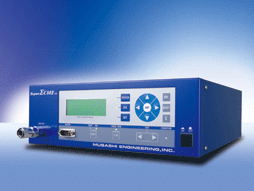 One of the most commonly used types of fluid dispensers in the world of manufacturing is the pneumatic dispenser. As the name implies, these dispensers use a controlled, pressurized air source to force fluids out in either lines or dot patterns.
One of the most commonly used types of fluid dispensers in the world of manufacturing is the pneumatic dispenser. As the name implies, these dispensers use a controlled, pressurized air source to force fluids out in either lines or dot patterns.
If you’re looking for a basic dispensing system for your product creation process, a simple pneumatic dispenser may be all that you need. Here are some of the key benefits:
Versatility
There are several types of dispensers that may be powered by air pulses, including ones that use syringes, valves, cartridges or tanks. Applications can include hand-held syringes for highly custom work or dispensers that are incorporated into a fully automated system.
Options with precision nozzles can be used for creating ultra-thin lines, and higher-end models have the capability to adjust for viscosity change or for syringe volume change.
Systems requiring high precision dispensing can be incorporated in tabletop robots that have active dispense parameter control. This means that dispensing pressure and other parameters can be modified at start/stop dispense points, on corners, or on slopes to dispense the perfect line regardless of the varying atmosphere.
Cost-effectiveness
Typically pneumatic dispensers are available at a lower cost than other fluid dispensing systems, especially if the application doesn’t require extreme precision. They also are less labor-intensive than some other systems because of their ease of operation and generally lower maintenance requirements. There is little cleaning required, and lower-cost needles and syringes can be thrown away after use.
Primary uses
Pneumatic dispensing systems are ideal for processes that require precise and thin lines and dots of adhesives and more. They are especially common in electronic production—particularly the smartphone industry. They can be used for sealing of LCD screens using various epoxies, sensor plotting applications for dispensing onto printed circuit boards, for use in microphone or speaker dispensing, and more.
Drawbacks
Pneumatic dispensers typically cannot handle fluids of especially high viscosity. They are also less suitable for processes in which nozzle-to-product contamination must be fully controlled (such as biomedical applications, which typically require non-contact dispensers).
Not sure exactly which model or which system will best suit your needs? Contact our automation experts and we’ll be happy to help you find the right solution.


